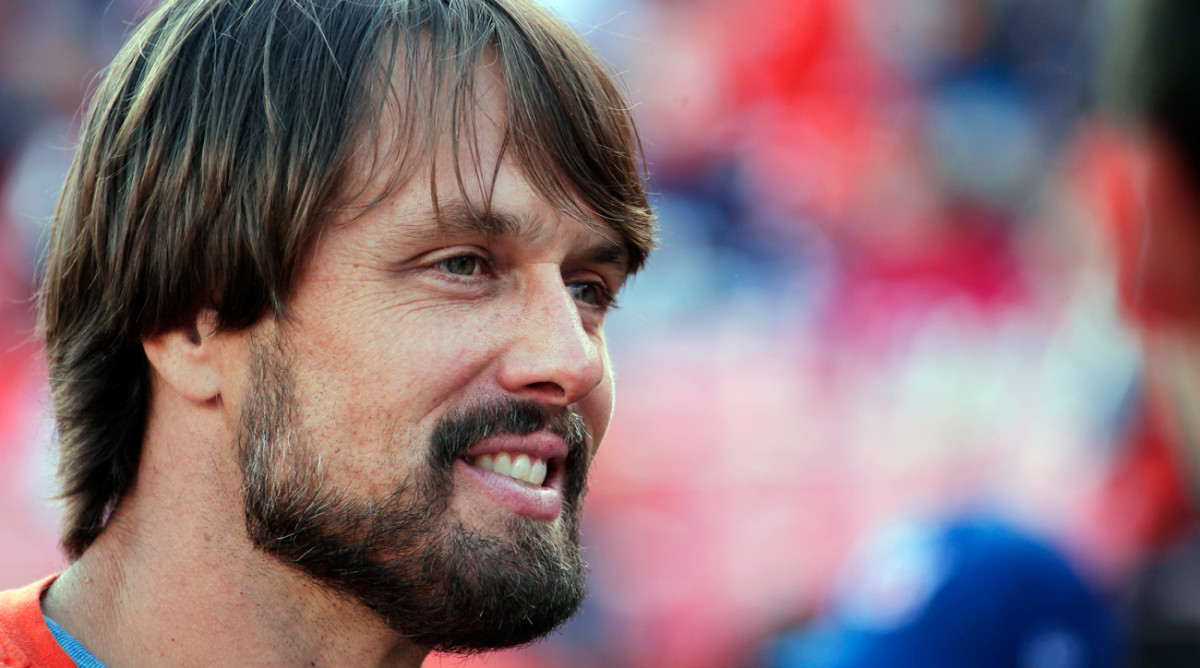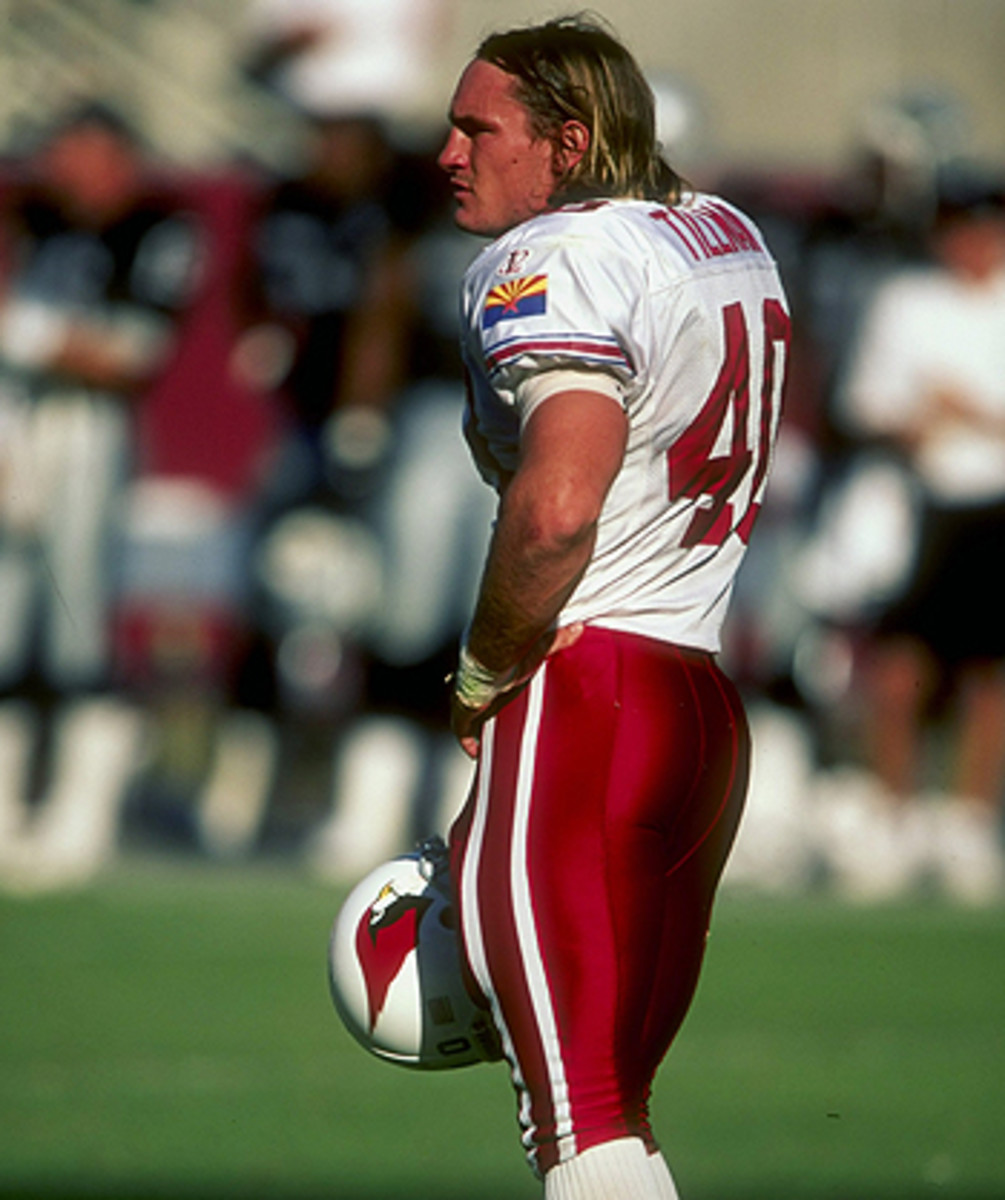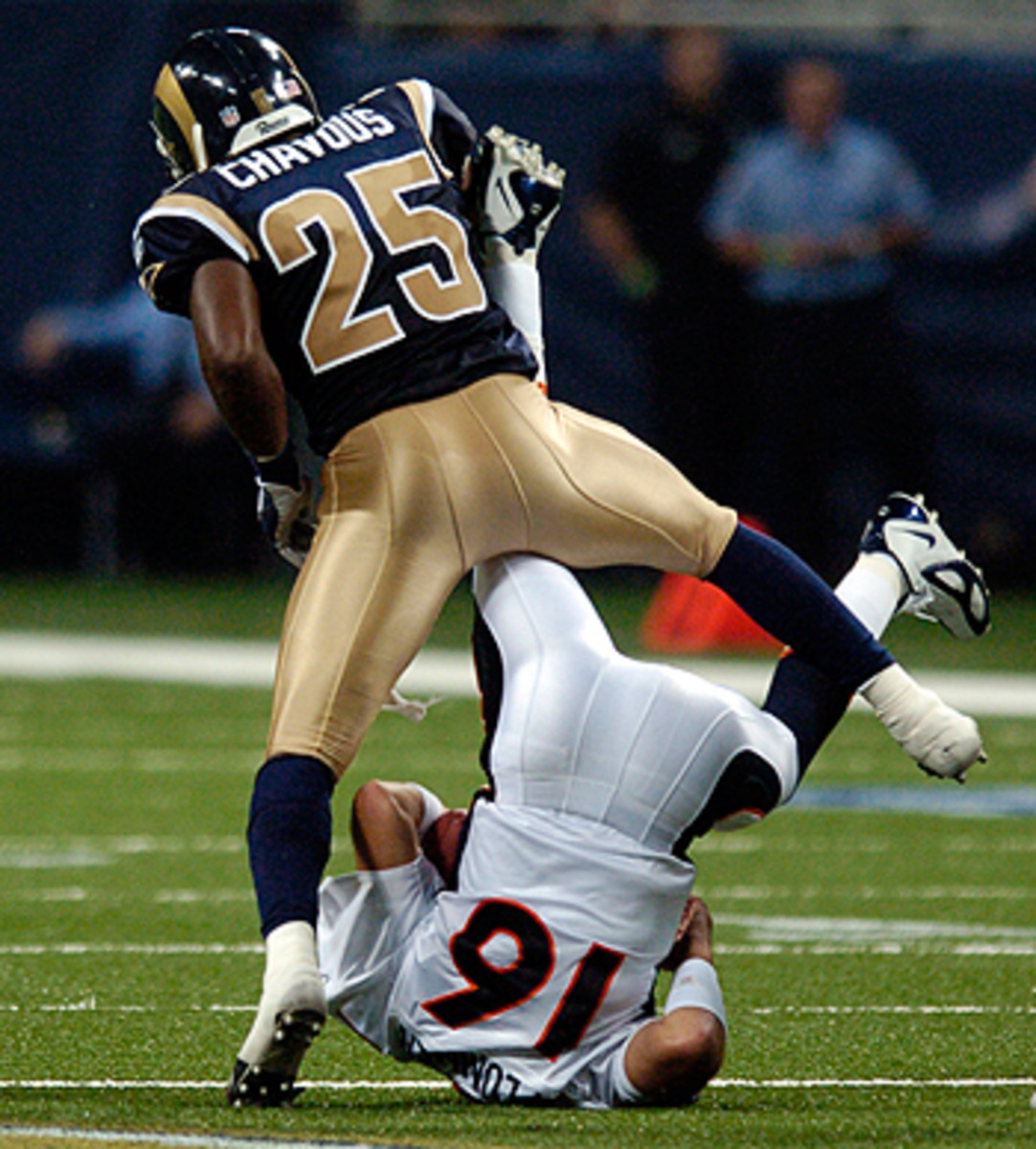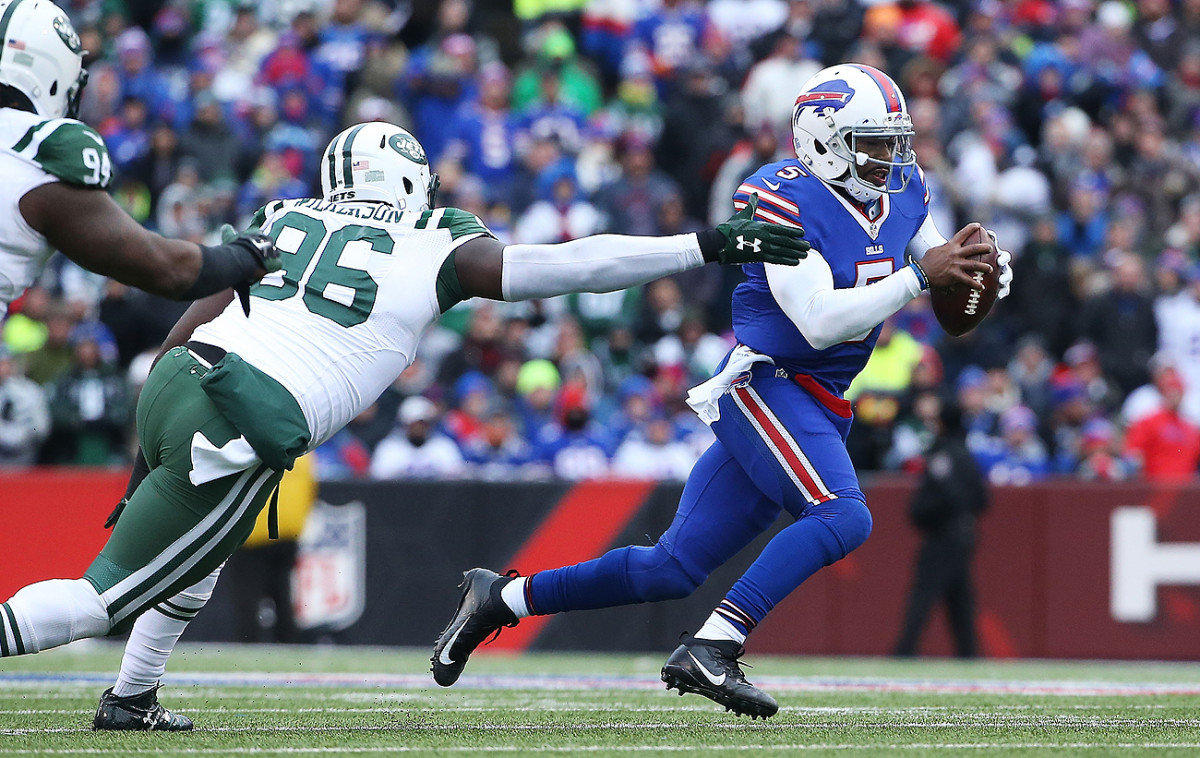Jake Plummer’s Plan to Alleviate Pain for Players

With Peter King on vacation until July 25, this week’s Monday Morning QB guest columnist is Jake Plummer, the former NFL quarterback. Plummer was selected 42nd overall in the 1997 draft by Arizona and played 10 seasons for the Cardinals and Broncos before retiring in 2007. An All-American quarterback at Arizona State in 1996, he made the Pro Bowl in 2005 and left the game with 29,253 passing yards and six playoff starts. Now 41, Plummer splits his time between Colorado and Idaho, and advocates for the use of cannabinoids to treat chronic pain and sports-related injuries.
By Jake Plummer
Happy Fourth of July to you and your family! I’m here to talk football, and to advocate for a responsible pain management solution for football players that has been met with resistance by the NFL establishment. But first, a note about a personal hero of mine who embodied the qualities we celebrate on this holiday.

I don’t need Independence Day to come around to remember Pat Tillman, because Pat Tillman was a F---ing champion well before he fought for our country and lost his life in Afghanistan.
I met Pat my sophomore year at Arizona State University and immediately liked him; he was confident but not cocky, smart yet not demeaning. He was a fierce competitor, an undersized fighter with an oversized passion for life. And best of all, he said “Dude” all the time.
I played football with Pat for seven years—three for the Sun Devils and four with the Cardinals. It felt good to know that when Pat was on the field he was always going to set the tone and bring the fire. He treated everything with that same passion, whether he was in the film room studying for our next opponent, by the pool having a heated discussion about the greatest movies of all time (Tombstone and True Romance were favorites), or practicing at Camp Tontozona, diving head-first off the cliff into Tonto Creek. Pat lived life to its fullest and soaked up the finer moments most of us fail to enjoy.
Prior to Pat’s last deployment to Afghanistan, I received a call from him while at my brother’s house in Coeur d’Alene, Idaho. Pat was checking to see how I was after calling off my wedding at the last minute. He wanted to make sure I was okay. Meanwhile, he was packing and getting ready to head back to fight for our country in Afghanistan one more time. It was his phone that should have been ringing, not mine. I should have been calling him, wishing him well, telling him how important he was to me.

He was killed April 22, 2004, at the age of 27 by friendly fire during a gunfight in Spera, Afghanistan.
I think about Pat often, not simply for that failure of mine to be as a good a friend to him as he was to me in a critical moment. I just miss him. I’m sad he’s not around to drink a Guinness with me. But still, I feel lucky to have known him.
I still draw inspiration from his legend. He showed me it’s okay to believe in yourself and your cause; you know it’s right if it comes from your heart and you bring it with all you got. Never lose your fight, treat people right, never be dull and continue to challenge yourself to be a better person. That is how I honor my friendship with Pat, one giant-sized, F---ing champion.
* * *
Cannabinoids and the NFL
In 2012, five years after my last season in the NFL, I require microfracture surgery on both hip joints and had both labrums reattached. While on my back for weeks in recovery and rehab, I asked myself for the first time, What the hell did I play football for? This sucks.
I became depressed. I moved to Colorado between surgeries, got a medical marijuana card and started using THC, the active ingredient in marijuana, for the pain. Years later, I was introduced to Charlotte’s Web, a hemp extract high in cannabidiol (more commonly known as CBD, a non-toxic, non-addictive, non-psychoactive naturally occurring compound in cannabis). With the right amounts of CBD, which contains trace amounts of THC, I feel virtually pain free. The inflammation in my joints that stiffened up in the cold winter months was gone. The random headaches that would throb behind my eyes to the beat of my heart? Gone. I still eat gluten and sugar, I still enjoy a cold brew or two. The only thing different? CBD.

Today I love that I played football. It was a thrill, and today it gives me a platform to do so many great things. One goal that occupies my mind and efforts today is the growing campaign for research into Cannabis, most notably CBD, as an alternative to the harmful narcotics used today by NFL teams who have been reluctant to embrace new research on hemp-based solutions.
I have gladly taken a stance on this issue because it’s important to me. I am currently employed as a spokesperson for CW Botanicals. Our campaign began with a video, “When The Bright Lights Fade,” and has grown into a movement to educate more individuals about the use of Cannabis as an alternative to harmful pharmaceuticals.
When I played I really cared about my teammates. They made me who I was, helped me achieve great things and win some big games. I still care about my teammates and this is my way of showing them. I want to provide my old teammates and opponents with a possible remedy to their pain and struggles while helping current players possibly avoid what may lay ahead in their post-football careers. CBD, one of more than 100 different cannabinoids found in the cannabis plant, is patented by the U.S. government as a Nueroprotectant and Anti-Inflammatory, and CBD has shown signs of acting as an anti-depressant, anti-oxidant, and is anti-tumoral. It also helps suppress muscle spasms, migraines and is a sleep aid. This should pique the interest of all current players interested in possibly limiting the long-term effects of playing football.
Currently, two of the leading doctors and researchers in the country, Marcel Bonn-Miller (Penn School of Medicine) and Ryan Vandrey (Johns Hopkins), are forming studies that will assess the health and substance use of current NFL players and also form a broad spectrum health assessment of former players. These studies will help understand what current players use during a season and how it effects them on and off the field. They also will study what former players use in order to deal with pain brought on by playing the game they loved. Our biggest challenge now is getting players to sign up for a study of this magnitude.
Enter the NFL and the NFL Players Association.
Both the league and the players’ union have taken our calls, but the NFL says it has no right, due to labor laws, to grant access to the players for our study. This sort of access must be granted by the NFLPA. Our last discussion with the NFLPA has led us to believe that they feel there needs to be a healthier alternative form of medicine than opioids, which players can become addicted to. This is a good sign and a move in the right direction.
Once the NFLPA grants us access to sign up current players, we are ready to go thanks to the work of free-agent tackle Eugene Monroe and Titans linebacker Derrick Morgan. Both of these men have stepped up and voiced their opinions and advocacy on the topic of Cannabis as medicine. Most importantly they’ve donated some of their hard earned cash to the Realm of Caring, an amazing organization working with Johns Hopkins and Penn to help fund this study. Eugene and Derrick feel the pulse of their teammates and believe there’s a strong desire in the locker room for players to have a healthier option for pain management. Current and former players that feel the same can sign up, confidentially, for more information on this study. Players are the key to changing the policies of their employers.
Football is entertainment and so long as the fan, most likely drinking a Bud Light, is entertained why should we care how an athlete chooses to medicate.
Additionally, Dr. Bonn-Miller and Dr. Vandrey will be conducting a series of studies exploring how the use of cannabinoids, specifically cannabidiol (known as CBD), can help treat and prevent the onset of symptoms associated with CTE and traumatic brain injury. The first phase of our study will examine current players substance use and their health. We want to know what they’re taking, be it Oxycodone, Celebrex, a Medrol dose pack, CBD, THC, and the effects it has on their health. Once we have the baseline data of what players use and how it effects them we can start phase two. In phase two we plan to administer CBD to players then track and analyze their recovery time from concussions and injuries, how they heal after an injury and how they’re mentally coping with the demands and rigors of an NFL season. It’s important data to have if a player wants to try and perform at the highest level and keep their job.
The largest obstacle, however, is the remaining stigma associated with cannabis across the country and in our laws. As it stands today, the DEA classifies CBD as a schedule 1 controlled substance with no currently accepted medical uses and a high potential for abuse. This classification could soon change along with marijuana. Once this happens the question will again be put in front of commissioner Roger Goodell about the use of Cannabis in the NFL for pain, inflammation and CTE. I predict the brand behind Goodell will prevent him from giving any definitive answers about allowing players to use cannabis, CBD or THC, but it doesn’t have to be that way. The NHL is the only professional sports league to not include Cannabis on its list of banned substances. As long as NHL players conduct themselves to the standards of society, they are free to partake all they want. In the NBA, commissioner Adam Silver is more concerned with performance enhancing drugs and on the topic of marijuana has said, “marijuana testing is something that’s collectively bargained with the players’ association, and we adjust to the times.”
If this declassification happens it should help us with our research. It will give the current players, the ones with the loudest voice, a rallying cry, especially if they live in one of the 25 states that currently allow medicinal marijuana. That’s a bad double standard the league is allowing to take place. If a healthier option is out there with no side-effects or risk of addiction, the players should be allowed to use it. Remember, football is entertainment and so long as the fan, most likely drinking a Bud Light, is entertained why should we care how an athlete chooses to medicate.
So here we stand. The two main governing bodies, the NFL and NFLPA, know about CBD. Two current players with the fortitude to speak up are igniting a conversation about Cannabis. Today’s players take better care of their bodies and want a healthier option. The time is now; we can’t wait until another hero makes headlines by endangering themselves or others. We can’t wait to find a way to test for CTE until after another former player is dead. The fact remains that football takes a toll on the body and brain. What if Cannabis can help reverse or lessen those effects?
The NFLPA, current players, former players, owners, coaches and fans of football need to step up. Educate and inform yourselves and others with untreatable ailments about the benefits of Cannabis. Rock Stars, athletes, mothers, grandfathers, sisters, brothers and pets need to know there is a safer way to help ease the pain. Donate to the Realm of Caring and the Institute for Research on Cannabinoids and help save this beautiful game. The NFL can set the tone and lead the way and help people live better lives.
* * *

Snake’s Takes (10 Things I Think I Think)
1. I think, speaking of quarterbacks, I love the new breed of hyper-mobile pocket passers that can extend plays and make the game more exciting to watch. Players like Cam Newton and Colin Kaepernick remind me of Randall Cunningham, one of the greatest playmakin quarterbacks of my time. My favorites are Russell Wilson and Tyrod Taylor because of their smaller statures, evasiveness, playmaking abilities and tremendous skill throwing the ball on the move. Who says you have to be 6’4” to play QB in the NFL?
2. I think I’m amazed that a ball is still kicked off to begin games. The crowd is frantic as the ball is kicked off to a deafening roar. The coverage team flies down the field ... as the ball flies out of the back of the end zone and the players jog off the field winded. It is the most over-hyped play in sports; just put the ball on the 20 and start the drive.
3. I think pass interference should be a 15-yard penalty, not a spot foul. Underthrown bombs should not be rewarded with 1st-and-goal at the 4-yard line. One referee’s judgment call can swing the momentum and ultimately influence the outcome of games.
4. I think I’m jealous of how protected today’s quarterbacks are. Rarely do they get hit outside the pocket or slammed to the turf by two 300-pound men. This is why we see guys like Peyton Manning play for 18 years and Tom Brady look and play like he’s in his twenties. They don’t take the same abuse quarterbacks did when I played.
5. I think I can’t believe how much freedom and control the media has now. Nothing is off limits anymore with cameras catching every moment from the locker room to the field to the celebrations after games. Personally I would hate having cameras present all the time. The authenticity of special moments shared with teammates is lost when cameras are ever-present.
6. I think I’d like to say bravo to Marshawn Lynch. You stayed true to yourself and did not worry about your brand or your followers. You were authentic and the league needs more like you. I would’ve loved to have you in my huddle when I played. Enjoy life, Beast Mode!
• HE WAS A TOUGH SONOFAGUN: Rex Ryan tells stories of his late dad Buddy Ryan
7. I think it’s incredible how the NFL has convinced fans everywhere that the combine is entertaining enough to sit and watch. How they pulled this off baffles me. The last thing I want to watch in April is grown men running, jumping, benching and throwing in spandex. It’s unnecessary hype for skills that do not transfer to the actual field of play, yet fans keep tuning in for hours just to see someone run a 4.3-second 40-yard dash. Sometimes a break from the game is nice: It makes you miss it and yearn to watch it again
8. I think I’d like someone to please tell me why Jerry Kramer is not yet in the Pro Football Hall Of Fame. He was the anchor on one of the most celebrated offensive lines in NFL history. He played 11 seasons for the Packers and was a five-time All-Pro and three-time Pro Bowl selection. He played on five NFL championship teams, two Super Bowl winners and is the only member of the NFL’s 50th anniversary team not in the HOF. Oh yeah, he also kicked field goals and led the league in FG% in 1962. Those credentials make him a worthy HOF selection. If you feel the same, please write to: Pro Football Hall Of Fame, Attn; Senior Selection Committee, 2121 George Halas Dr. NW, Canton, OH 44708. Let’s make sure this classy Idaho Spud gets his bust in Canton.
9. I think fantasy leagues, while broadening the fan base, are ruining the game. Everything is stat-driven now. How many yards did you gain, how many touchdowns did you throw or score? How many field goals did you make? Points for a player’s overall statistical performance take away from the purity of the action on the field. True fans root for their team though thick and thin. A true fan doesn’t belittle a player on social media for not throwing more touchdowns. Neither does a true fan feel down after his team wins and his fantasy team takes last place. A true fan finds enjoyment in watching an offense execute four straight scoring drives to win by two in the fourth quarter. A true fan marvels at a defense making the best quarterback in the league look like a rookie. I watch the game to witness teams overcoming adversity and fighting until the end, players leaving it all on the field for the guy next to them. That is the true essence of football, not individual stats and points.
10. I think, after witnessing in person the dominant performance and victory by the Broncos in Super Bowl 50, I later watched the game at home and couldn’t believe my eyes when a commercial advertising treatment for OIC (opioid-induced constipation) ran during a commercial break. First, the topic of constipation is a private one that can be handled naturally with correct dietary choices or a brief talk with a doctor. Second, this confirms that America is in the midst of an opioid epidemic. When there's a need to air a commercial advertising treatment to help you poop, it’s time to look into other options for pain.
• Question or comment? Email us at talkback@themmqb.com.
